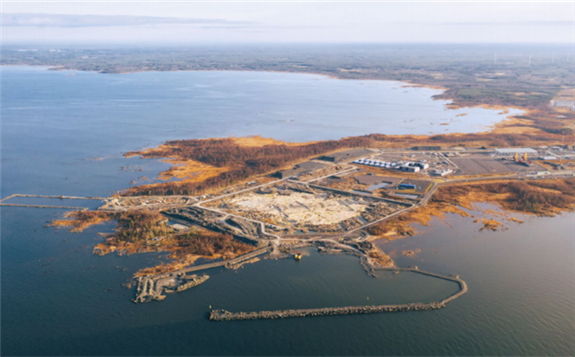Finland's Fennovoima said operational changes made in 2019, both within the company and throughout the Hanhikivi 1 nuclear power plant project, have brought significant progress in different areas of the plant design and preparatory work. In a newly-published report, the company describes the project's progress and the sustainability work it carried out last year.

Fennovoima signed the plant supply contract for Hanhikivi with Rusatom Overseas - Rosatom's subsidiary concerned with exports of nuclear power plants - in December 2013. Rosatom offered to build a plant using a 1200 MWe AES-2006 VVER under a fixed-price contract. The Hanhikivi project is owned by Fennovoima, in which a 34% stake is held by RAOS Voima Oy, the Finnish subsidiary set up in 2014 by Rosatom for the purpose of buying a share in the company.
"We started the year by launching our development programme, with the target of reprogramming both ourselves and our plant supplier RAOS Project Oy," said Fennovoima Chief Operating Officer and Interim CEO Timo Okkonen. "This had become necessary due to the severe project delays that we had faced during the previous years. We had already been carefully analysing the situation in 2018, so our priorities were clear as we headed into 2019."
As part of the development efforts, Fennovoima's organisation has been restructured and responsibilities have been clarified, particularly between technical and project operations. The company said it had changed its approach so that the design solutions as well as the entire project were examined in stages and took into consideration the entire plant lifecycle.
"During the year, we resolved key plant-level safety issues together with the plant supplier," said Okkonen. "Based on this work, we could state that our Hanhikivi 1 plant design will support a very high level of nuclear safety and security. At the end of 2019 we also submitted the first batch of the preliminary safety analysis report (PSAR) to the Finnish Radiation and Nuclear Safety Authority (STUK). This marked the start of the technical construction licence activities."
A new technical cooperation plan was prepared together with the plant supplier to agree on a multi-stage basic design process and related quality plans. Fennovoima said it had reviewed most of the systems design and started to review building layouts by the end of 2019. As of 15 January this year, Fennovoima had conditionally accepted 134 documents it had received from RAOS Project Oy, rejected 54 and was reviewing 34 more. At the end of 2019, the company was still waiting for the delivery of the basic design packages of the turbine island and buildings, of which the basic design documents for buildings are - except for the control room building - almost complete.
“We have now achieved a more proactive mode of leading the project and our operations," Okkonen said. "In practice, this means that we do not only react to problems, but we can see the big picture and prepare ourselves for the next stages." He added, "As a new company, we need to constantly develop and renew ourselves as our project goes ahead. This can be accomplished by a combination of innovative dialogue and careful decision making."
Fennovoima began excavation work at the Hanhikivi site in Pyhäjoki in northern Finland in January 2016. It had originally anticipated receiving the construction licence for Hanhikivi 1 in 2018, with operation beginning in 2024. However, in September 2017 the company announced it did not expect to receive the licence until 2019 as the review of documentation related to its application was taking longer than originally envisaged. In December 2018, Fennovoima said it now expects to receive the construction licence in 2021.
Preparatory construction work of the infrastructure in the project area on the Hanhikivi headland has reached a point where Fennovoima is ready for the construction of the nuclear power plant as soon as the construction license is granted, construction director Jouni Sipiläinen said. "However, before beginning the construction of the plant, some 700,000 cubic metres of rock must still be extracted from the excavation pit and the levelling concrete for the plant foundation must be poured."